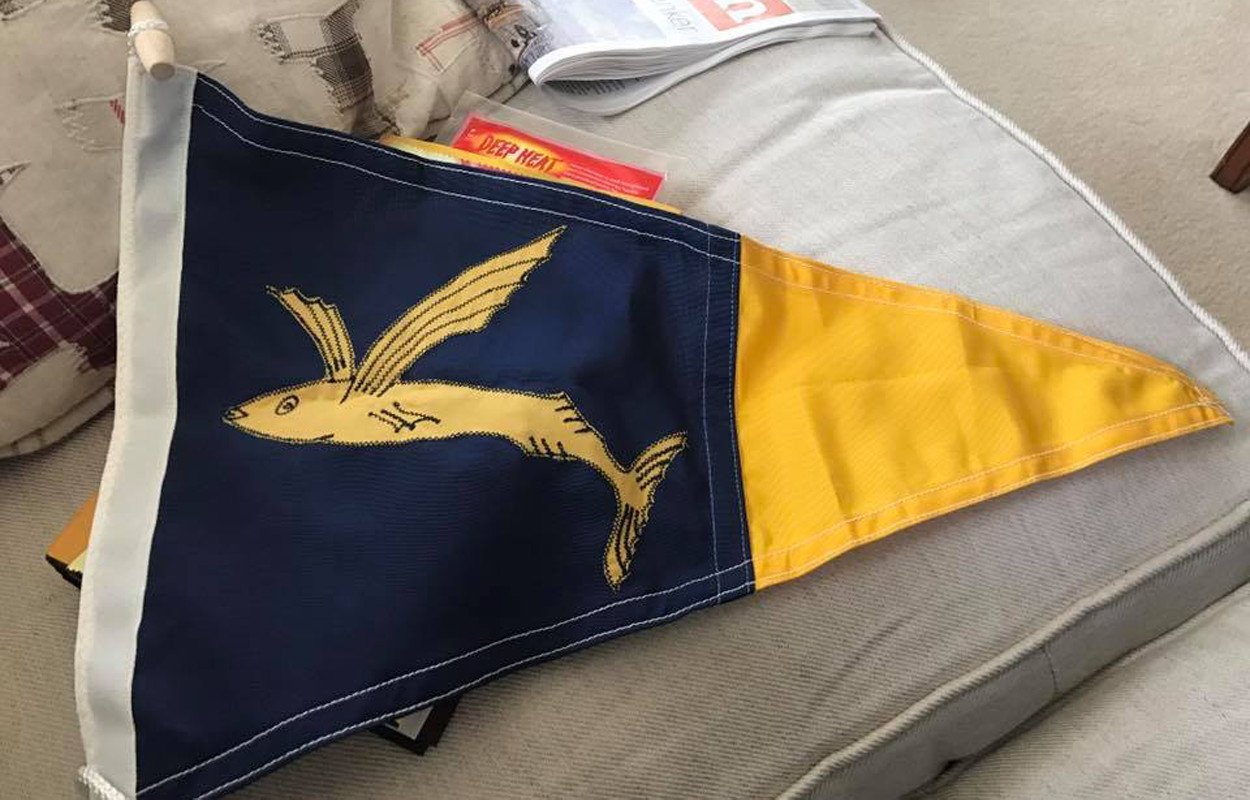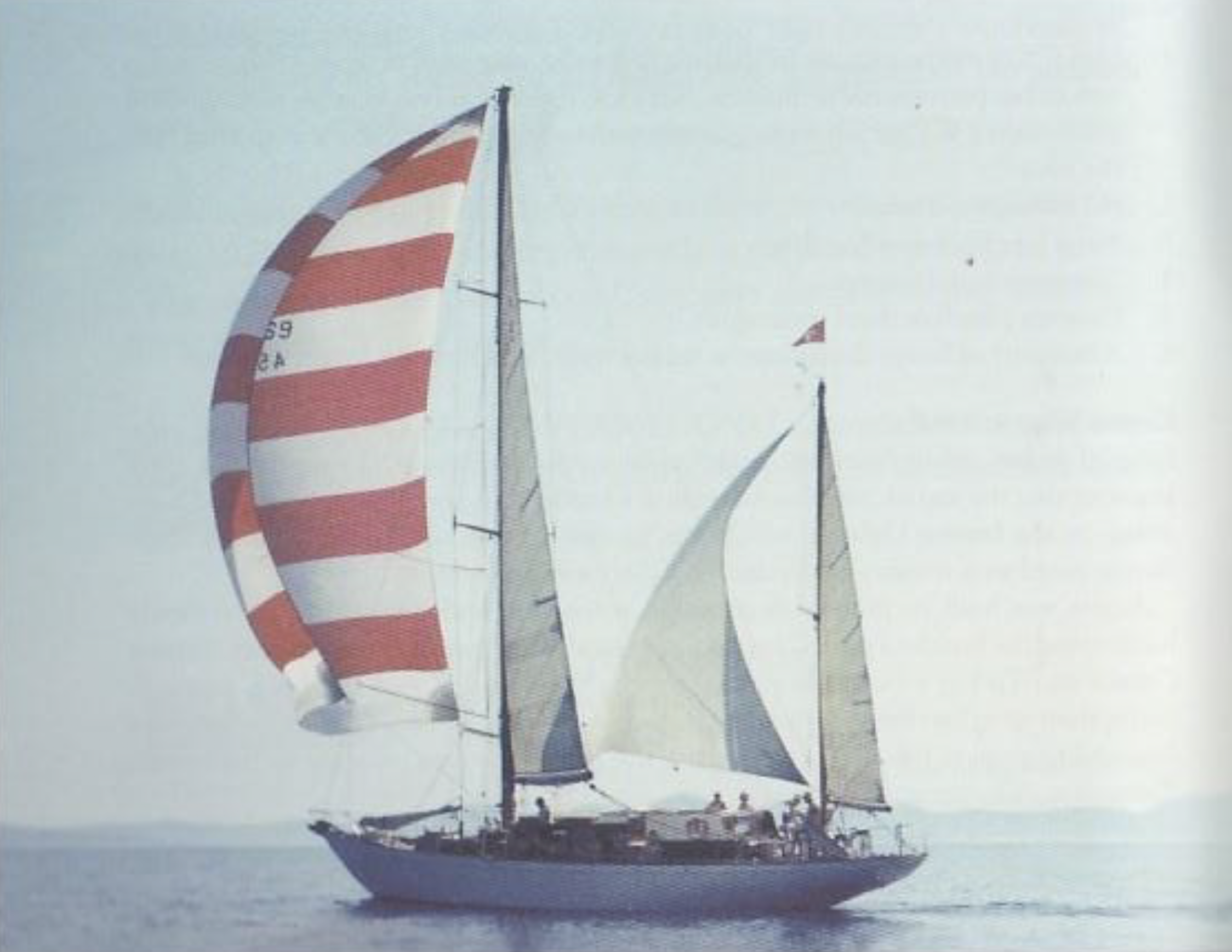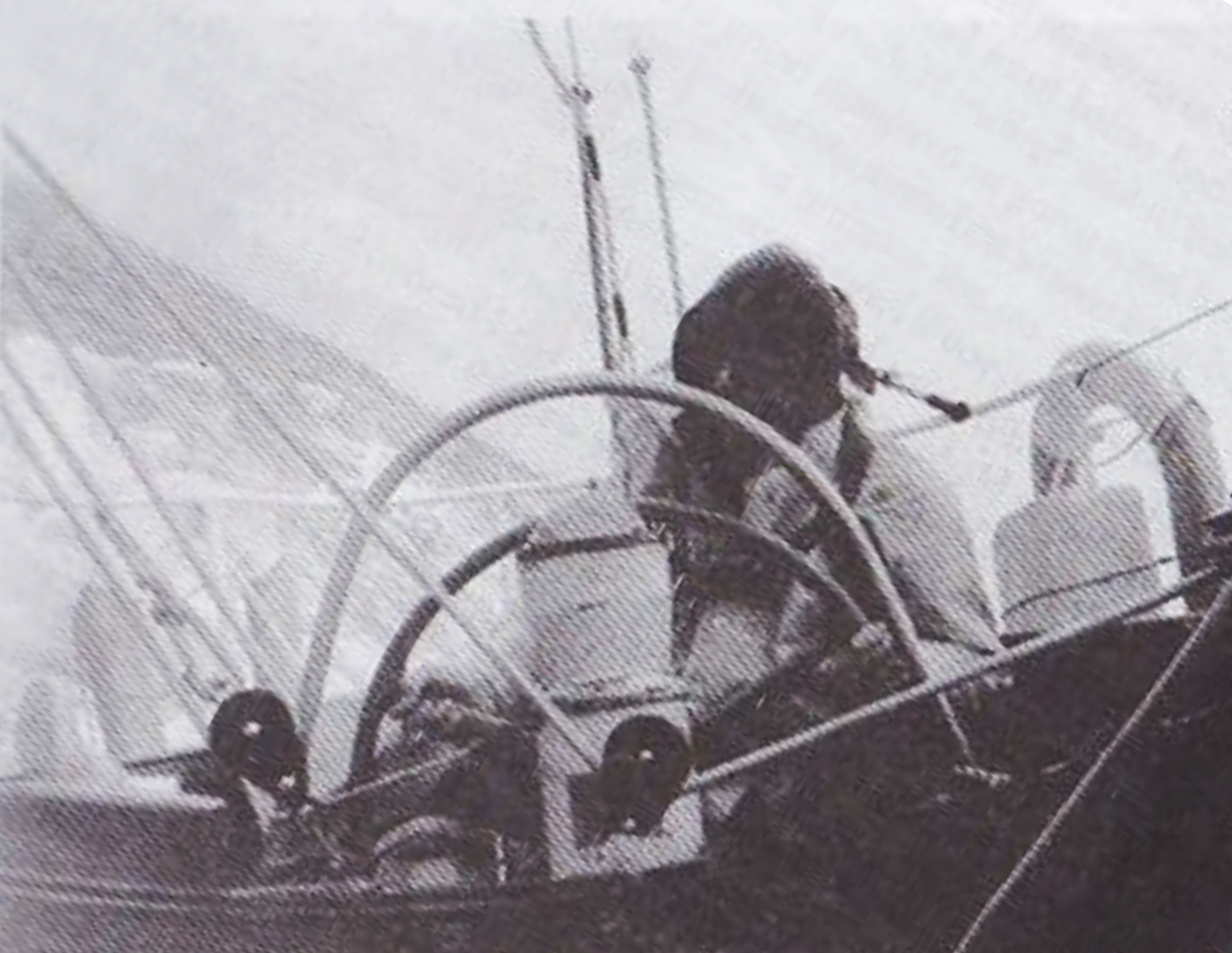Pioneers and Trail blazers
By John Maddox
OCC Burgee
This article was first published in “Flying Fish,” the Journal of The Ocean Cruising Club
(John is one of the club's most active Australian members and a regular communicator with British HQ. He was elected an impressive 35 years ago, has been port officer for Sydney, New South Wales for more than a decade, and between 1993 and 1999 held the post, of Rear Commodore, Australia. He still manages to fit in a good cruise most years and seldom misses a Sydney Hobart race.)
Christopher Freer, a friend of mine from the UK, once said to me,
“those who cruised the oceans before 1960 were the pioneers, and those who did so between 1960 and 1975 were the Trail Blazers for those who came afterwards.”
Chris went on to name Humphrey Barton, and most of the Founder Members, as well as others, such as the Hiscocks, Pyes, Claude Worth, Gerbault, WA Robinson, Connor O'Brien, Erling Tambs, and the Smeetons as the Pioneers. Tony Vasey has mentioned them at the beginning of “The First 50 Years”.
Having qualified in 1968 at a young age, I thought that it might be interesting to share with you what it was like being one of those so called Trail Blazers. I crossed the Atlantic east to west in 1967 and west to east the following year. The main differences were…
No GPS or electronic, no EPIRB. No SSB radio, no email or weather effects, no radio net, either professional or amateur. Not a lot of radar and no weather routing, and quite often a Walker log trailing astern with us hoping that a shark would not take the rotor!
No furling headsails
Not a lot of self steering gear.
Temperamental engines.
No solar panels or wind generators.
A majority of heavy displacement timber hulls which meant longer passages.
East to west in 1967
I joined ANJARO, a 62 foot Sparkman and Stephens yawl in Piraeus, Greece in May 1967 knowing that she was to cross the Atlantic in October that year. Prior to that, I'd been living on the famous GULVAIN which was for sale. (The same GULVAIN in which Humphrey Barton raced west to east after VERTUE XXXV’s historic crossing) ANJARO was built in Italy of double skinned mahogany and was said to have nearly bankrupted the builder's yard. Cantieri Costaguta! After spending the summer cruising Greece and Turkey we coast-hopped through the Corinth Canal to Ithaca, across to Sicily and then up to San Remo for a refit-The Ratsay & Lapthorn man even came out from England to go over the sails-then along the French Riviera on route to Barcelona. Tarragona, Alicante and Gibraltar
ANJARO under Spinnaker-Note the anti-wrap net between forestay and mainmast.
The crew for the crossing was to be Nedo Cassini and his girlfriend Maggie Eves from San Remo and London, Janey Easton from Chichester, UK, Sergio and his wife from Italy and David Ham and me, both from Sydney, Australia. Leaving Gibraltar for the Canaries in late October meant that the northern winter was approaching and the weather was rough. The big downer was that Paul Carey, a Canadian and a good friend of Nedo and Maggie was lost overboard from the 75ft American schooner BARLOVENTO, which was completing a circumnavigation by crossing the East Coast of the States. Despite six vessels looking for him, he was not found. Apparently it was night time with two men on watch. Paul said to the helmsmen that he was going to check the staysail and never came back. This tragedy led to ANJARO going into Agadir, Morocco and then to Tenerife, where Sergio and his wife plus David decided to leave.
The owner Erwin Bernheim, was forbidden to sail with us by his wife Ruth, who said,
“I lost all my family in Europe in the Second World War and I do not want to lose my husband at sea crossing the Atlantic”
After Erwin had tried for 10 days to find more crew without success, the four of us had a round table conference and telephoned him to say that we were leaving the next day and would contact him in about three weeks from English Harbour, Antigua so that he could fly out.
None of us had sailed across an ocean before. Nedo and Maggie had not been out of the Mediterranean. Janey had sailed from Falmouth to Gibraltar stopping at interesting ports, while I had sailed on four Sydney, Hobart races down the East Australian coast. Originally, Sergio had been going to navigate, being in the Italian Navy, but that task fell to me as I had done a course and some navigation returning from Hobart to Sydney after the races. There was no self steering, as Erwin said it would interfere with the mizzen boom….”And anyway, you'll have seven crew”. Maggie and Janey stood two hour watches and Neto and I did three hours, alternating continuously, so the girls had eight hours off (3+3+2), while Neto and I had seven hours (3+2+2) throughout the 19 days we took to get to Antigua. The Spinnaker was taken down at night, as it was rather large.
Of course, it was celestial navigation all the way, But I headed for Guadalupe, where there was a lighthouse so that if my longitude was out, we would see the light before going ashore. In the event the longitude was accurate, and after seeing the light we headed north to English Harbour. We got regular time checks from WWV, Beltsville, USA. Mary Blewitt and the chapter on navigation in the 1959 edition of Eric Hiscock’s “Voyaging Under Sail” stood me in good stead and a new Plath sextant brought by the owner was a great help.
The Crossing was not remarkable in any sense, and only notable in that even in 1967, there were not many crossing the pond-In fact, only one other yacht left from Tenerife while we were waiting there, and she was going to Barbados. We did not see any vessels at all during the 19 day passage, and had no radio contact with anybody.
We had only one minor drama and that was a false alarm. As the helm could never be left unattended, and Janey followed me in the watch system she had an alarm clock to wake herself up because she had the forepeak. Nedo had once seen GITANA owned by one of the Rothschild family, just make it into Marseilles with hardly any freeboard when one of her skin fittings broke. He had rigged up an automatic bilge pump connected to an electric bell so that if the pump started, the bell would sound. One night Janey’s alarm clock went off, and she got up through the forehatch and came along the deck to relieve me at the helm. All of a sudden there was a great commotion in the bilge as Nedo thought his bilge alarm was sounding!
I left ANJARO at the end of February 1968 to sail from Grenada to Trinidad, continuing through Venezuela and Colombia, to help friends take their boats through the Panama Canal-At that time, you had to have four line handlers as well as a helmsmen.
West to East in 1968
As I wanted to sail to England, and ANJARO was staying in the West Indies for the time being, I arranged with John Appleby, skipper of RAMROD to meet them in May 1968, At City Island, New York, for the passage to Hamble, UK. That was my first contact with the OCC, as John was a member and RAMROD was owned by founder member Freddie Morgan, who was Rear Commodore from 1960 to 1965 and then Vice Commodore from 1966 to 1972. Let me say that I have been proud to be a member and have always tried to promote the OCC. RAMROD was a timber 45 foot cutter designed by Arthur Robb, which had represented the UK in early Admirals Cup races. We were a crew of five-John and Sheila Appleby, two Americans and me, from Australia. Again, we had no self steering.
Mike Rohr at the helm of a heeling RAMROD
John did the navigation and did not stand a watch. But Sheila did the same as the three boys. Again, we saw no ships or no other yachts and had no radio contact during the 30 day passage. We just said to family and friends that we would contact them in about a month when we arrived. “We'll see you when we see you”. Of course there was a record of us clearing out of New York on RAMROD and Tenerife on ANJARO, but there was never any question of anybody tracking our course across the Atlantic in either direction. We were amazed our first sight of England. I nominated this as my qualifying voyage.
Sheila Appleby running downwind mid-Atlantic
By the end of the passage the food stocks were a bit low, and being young and hungry, we were looking forward to a good meal. Arriving up the Hamble at 0200 on the 24th of June, we went ashore and raided the owner's’ locker as John had the key and had a slap up meal after 3300 miles, with grog and sea shanties sung by the Applebys. When Customs came on board at noon they said what good lads we were not going ashore. We didn't let on.
Well, that's a glimpse of two unremarkable passages 13 and 14 years after the club’s founding- which does seem a while ago, seeing as the club has just declared its 50th birthday. Maybe as Chris said, we were part of the “Trail Blazers”. However, two things about the passage were fairly unusual in those times. All of us on RAMROD were less than 25 years old, and neither boat had the owner on board
RAMROD’s young crew at Hamble in 1968, with John Maddox left.





